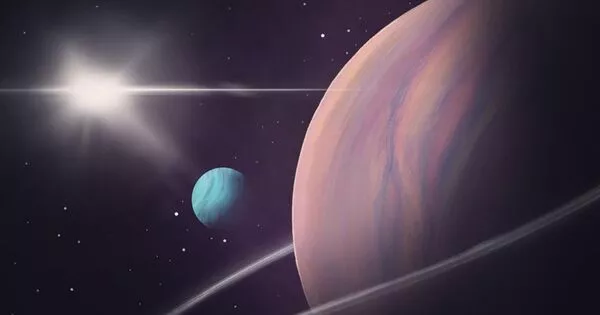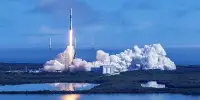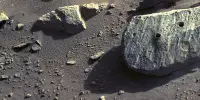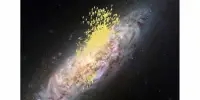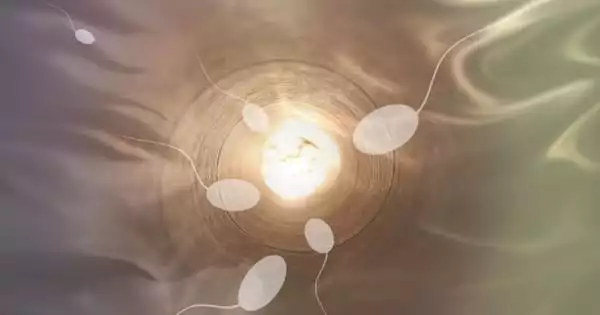There have been many discoveries of exoplanets (planets outside our solar system) that are similar in size to Earth. These exoplanets are found using various techniques, such as transit photometry and radial velocity measurements, and confirmed through follow-up observations. The discovery of an Earth-size exoplanet is an exciting step in the search for potentially habitable worlds and the understanding of planetary formation and evolution.
Using data from NASA’s Transiting Exoplanet Survey Satellite, scientists discovered TOI 700 e, an Earth-size world orbiting within its star’s habitable zone – the range of distances where liquid water could exist on a planet’s surface. The world is 95% the size of Earth and most likely rocky.
TOI 700 b, c, and d were previously discovered planets in this system by astronomers. Planet d is also in the habitable zone. However, it took an additional year of TESS observations for scientists to discover TOI 700 e.
“This is one of only a few systems with multiple, small, habitable-zone planets that we know of,” said Emily Gilbert, a postdoctoral fellow at NASA’s Jet Propulsion Laboratory in Southern California who led the work. “That makes the TOI 700 system an exciting prospect for additional follow-up. Planet e is about 10% smaller than planet d, so the system also shows how additional TESS observations help us find smaller and smaller worlds.”
If the star was a little closer or the planet a little bigger, we might have been able to spot TOI 700 e in the first year of TESS data. But the signal was so faint that we needed an additional year of transit observations to identify it.
Ben Hord
Gilbert presented the team’s findings at the American Astronomical Association’s 241st meeting in Seattle. The Astrophysical Journal Letters published a paper about the newly discovered planet.
TOI 700 is a small, cool M dwarf star located in the southern constellation Dorado, about 100 light-years away. Gilbert and colleagues announced the discovery of the Earth-size, habitable-zone planet d, which orbits the Sun every 37 days, along with two other worlds in 2020.
TOI 700 b, the star’s innermost planet, is about 90% the size of Earth and orbits the star every 10 days. TOI 700 c is more than 2.5 times the size of Earth and orbits once every 16 days. The planets are probably tidally locked, which means they spin only once per orbit such that one side always faces the star, just as one side of the Moon is always turned toward Earth.
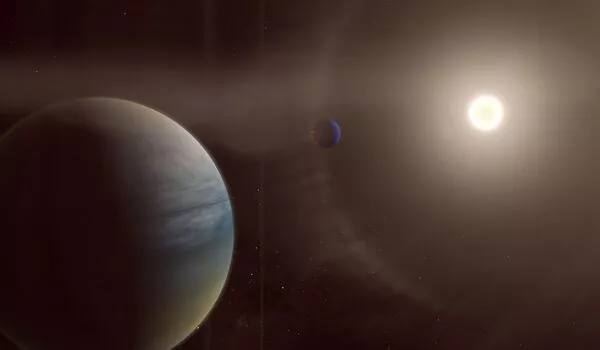
TESS observes large swaths of the sky, known as sectors, for about 27 days at a time. These long stares enable the satellite to detect changes in stellar brightness caused by a planet passing in front of its star from our perspective, a phenomenon known as transit. Starting in 2018, the mission used this strategy to observe the southern sky before shifting to the northern sky. It returned to the southern sky in 2020 to conduct additional observations. With an extra year of data, the team was able to refine the original planet sizes, which are now about 10% smaller than the initial calculations.
“If the star was a little closer or the planet a little bigger, we might have been able to spot TOI 700 e in the first year of TESS data,” said Ben Hord, a doctoral candidate at the University of Maryland, College Park and a graduate researcher at NASA’s Goddard Space Flight Center in Greenbelt, Maryland. “But the signal was so faint that we needed the additional year of transit observations to identify it.”
TOI 700 e, which may also be tidally locked, orbits its star in 28 days, putting it between planets c and d in the so-called optimistic habitable zone. The optimistic habitable zone is defined by scientists as the range of distances from a star where liquid surface water could exist at some point in a planet’s history. This zone extends on either side of the conservative habitable zone, which is the range in which researchers believe liquid water could exist for the majority of the planet’s lifetime. In this region, TOI 700 d orbits.
Finding other systems in this region with Earth-sized worlds helps planetary scientists learn more about the history of our own solar system. Gilbert stated that a follow-up study of the TOI 700 system using space and ground-based observatories is currently underway and may yield additional insights into this rare system.
“TESS just finished its second year of northern sky observations,” said Allison Youngblood, a research astrophysicist at Goddard and the TESS deputy project scientist. “We’re looking forward to the mission’s treasure trove of data and the other exciting discoveries it contains.”
